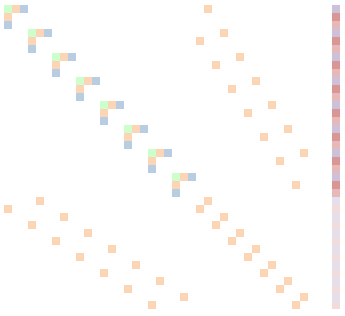
Modeling Support for Design and Verification
 Industrial control design processes increasingly make use of complex models derived from first principles, often encoded in high-level languages such as Modelica, VHDL-AMS and gProms. Such languages enable engineers to rapidly develop large-scale heterogeneous models commonly used for simulation and control system evaluation. While state of the art simulation tools offer reliable simulation of such systems, many challenges remain in the areas of real-time simulation, commonly used for hardware in the loop verification of control systems, and optimization. A particular challenge is how to leverage parallel many-and multi-core computing architectures.
Industrial control design processes increasingly make use of complex models derived from first principles, often encoded in high-level languages such as Modelica, VHDL-AMS and gProms. Such languages enable engineers to rapidly develop large-scale heterogeneous models commonly used for simulation and control system evaluation. While state of the art simulation tools offer reliable simulation of such systems, many challenges remain in the areas of real-time simulation, commonly used for hardware in the loop verification of control systems, and optimization. A particular challenge is how to leverage parallel many-and multi-core computing architectures.
From a methodological point of view, the research theme aims to bridge the gap between intuitive lanaguage descriptions and state of the art symbolic and numerical algorithms. Much effort is currently invested in model libraries, mainly for simulation purposses, but in order for the models to be widely applicable for other applications, significant developments are needed whit regards to flexibility and extensibility of current languages and tools.
The research approach is based on high-level language descriptions which are used as a basis for structural analysis using graph algorithms, model transformations and code generation. The results of the methodological research in the areas of languages, tools and algorithms are applied to industrial grade applications in related research activities. This strategy is deliberate and serves the twofold purpose of gaining access to challenging industrial applications of communicating and transferring research result into industrial use.
Some of the research in this area uses and contributes to the Jmodelica.org open source project.
Solution Techniques for Large-Scale Dynamic Optimization
Object-oriented physical models typically result in large-scale differential algebraic systems with special structure. There are various techniques for analyzing and exploiting this structure already during model compilation, resulting in problems which can be solved more efficiently numerically. These techiques are commonly applied for simulation of dynamic systems. The goal in this topic is to explore the benefits offered by these techniques when applied also to the solution of dynamic optimization problems.
Dynamic Optimization Algorithms for Parallel Architectures
While the clock frequency of modern processors is now increasing only moderately, the number of cores is increasing. This trend calls for new algorithms capable of exploring such hardware architectures. Specifically, parallel implementations of collocation algoritms for dynamic optimization are investigated. In addition, graph theoretic methods used in sparse algorithms and in simulation software will be explored in the context of dynamic optimization.
Co-simulation of Physical Systems
Simulation of coupled dynamic models in the context of co-simulation, where each coupled model contains apart from the model equation also an integration algorithm, poses significant challenges in how to exchange information between the models. A naive approach of using constant extrapolation and interpolation results in an inefficient simulation, and in more elaborate schemes wh may easily end up with stability problems of the overall simulation algorithm. The problem addressed in this topic is to develop and improve error estimation algorithms in order to develop efficient variable step-size co-simulation master algorithms. Also, focus will be on parallelism. There is a need for improving these methods and the reliability of the methods as it is increasingly used in industry.